Schlepping and Schmoozing Along the Interstate 5: Chapter 10 (Exit 7A: L Street): Southwestern College

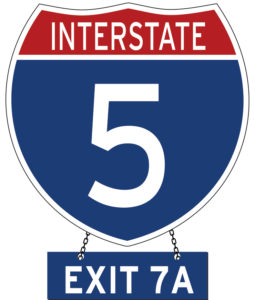 Exit 7A (L Street) to Southwestern College: L Street exit lets you off south of L Street, turn left to L Street, then right to go east. The name changes to Telegraph Canyon Road. Turn left at Otay Lakes Road. Entrance to College will be on left. Total distance: approximately 7.3 miles.
Exit 7A (L Street) to Southwestern College: L Street exit lets you off south of L Street, turn left to L Street, then right to go east. The name changes to Telegraph Canyon Road. Turn left at Otay Lakes Road. Entrance to College will be on left. Total distance: approximately 7.3 miles.
Researchers searching for Jewish stories will be gladdened if a college or university lies in their path. Faculty members may have expertise in subjects relating to the Jewish religion or to the history of the Jews. Such is the case of Bonnie Harris, Ph.D, who teaches history at both Southwestern College and San Diego State University.
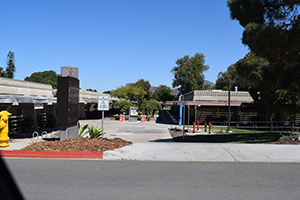
Harris is a member of the Church of Jesus Christ of Latter Day Saints who always had a particular fondness for Hebrew Scriptures, which she and others of Christian faiths refer to as “The Old Testament.” She speculates that perhaps somewhere in an Eastern European branch of her family, she might even have had Jewish ancestors. After raising three daughters and running a successful business as a contract seamstress for local bridal shops, Harris decided it was time to go back to school. She attended Grossmont College, then San Diego State University, where she completed, magna cum laude, a bachelor’s degree in humanities and a master’s degree in history with an interdisciplinary focus on Near Eastern Religious History.
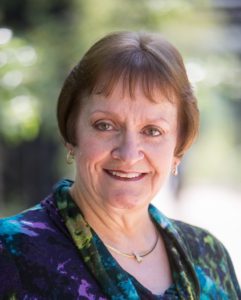
Her master’s thesis concerned how temple architecture evolved in the ancient Near East from that of Mesopotamia to Egypt to Greece and Rome and to the Temple in Jerusalem. Subsequently, she was accepted to a doctoral program at the University of California at Santa Barbara where, based on her work-study experience at SDSU as an archivist for the Jewish Historical Society of San Diego, she anticipated writing a dissertation on the Jewish history of San Diego County.
However, that was before the archival records of the late Cantor Joseph Cysner (1912-1961) were donated to the Jewish Historical Society of San Diego by his widow, Sylvia, who often volunteered at the society’s offices in the main library at San Diego State University. The directors of the society, Laurel and Stan Schwartz, assigned to Harris the task of putting the records in order and cataloguing their contents. Cysner (which he pronounced “Sizz-ner” but which others often pronounced “Sigh-zner”) had served as a cantor at Tifereth Israel Synagogue through the 1950s until his death by heart attack at age 48 in 1961. What Harris found was a treasure trove of Cysner’s personal remembrances about two little known aspects of the Holocaust: the Polenaktion by which the German Nazis forced Polish-born Jews residing in Germany to resettle in western Poland in 1938, and the rescue of 1,305 Jews to safety in Manila, the Philippines, from 1937 to shortly before the Japanese attack on Pearl Harbor, Hawaii, in 1941. Cysner had been one of those lucky 1,305.
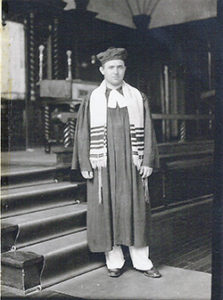
Enthralled by the stories Cysner told, Harris immediately asked the UC Santa Barbara History Department if she could change her dissertation subject so that it could be based upon Cysner’s experiences, both in Poland, where he was a prisoner of the Nazis, and in the Philippines, where he later became a prisoner of the Japanese. The department agreed, even though this meant changing Harris’ academic advisor and the schedule of courses to which she would commute from her home in San Diego.
There were many blanks in Cysner’s story that Harris had to fill, and in this she was aided by a grant from the U.S. Department of Education covering all the travel she would have to do. In Washington, D.C., the National Archives contained records of communications between the State Department and Paul 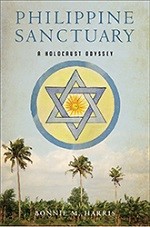 McNuttt, the U.S. High Commissioner in the Philippines (which had been a U.S. Territory since the Spanish-American War of 1898). In New York, the records of the Jewish Joint Distribution Committee, nicknamed “the Joint,” were helpful because that office provided funds for German Jewish refugees eligible for jobs in the Philippines. There were German records to be examined, including about Cysner’s residences in Bamberg, Germany, and in Zbaszyn, Poland, to which Cysner had been deported during the Polenaktion of October 1938. There were survivors of the experience in Manila to be interviewed; records in Japan about its occupation of the Philippines; and additionally, there was information to be gathered about Cysner’s experiences in San Francisco, where he served as a cantor prior to his final post in San Diego. The Philippine experience was the heart of Harris’s research. Her dissertation was published as a book titled Philippine Sanctuary: A Holocaust Odyssey.
McNuttt, the U.S. High Commissioner in the Philippines (which had been a U.S. Territory since the Spanish-American War of 1898). In New York, the records of the Jewish Joint Distribution Committee, nicknamed “the Joint,” were helpful because that office provided funds for German Jewish refugees eligible for jobs in the Philippines. There were German records to be examined, including about Cysner’s residences in Bamberg, Germany, and in Zbaszyn, Poland, to which Cysner had been deported during the Polenaktion of October 1938. There were survivors of the experience in Manila to be interviewed; records in Japan about its occupation of the Philippines; and additionally, there was information to be gathered about Cysner’s experiences in San Francisco, where he served as a cantor prior to his final post in San Diego. The Philippine experience was the heart of Harris’s research. Her dissertation was published as a book titled Philippine Sanctuary: A Holocaust Odyssey.
Zbaszyn, near the German-Polish border, according to Harris, “was a township with a population of about 5,000 before the refugees arrived, a town with surrounding agricultural areas, and then it suddenly had 8,000 refugee Jews. The people of Zbaszyn took in these refugees, not for free; they rented out rooms, attics, and their barns. Some Jews slept in the railroad station, others in an old mill – they scrambled to find a place to live. Many of these were city Jews who had means with them or friends or family who could send money on to them. It was not a concentration camp but was a site of restricted internment. You could not leave at will. It was a very poor community with a population that tripled overnight.”
Cantor Cysner was lodged in the mill with other single people until he was able to live with a family from Hanover, Germany, that had procured a place by a lake outside the city. Among families with whom Cysner became acquainted was that of Herschel Grynszpan, who at the time was a student in Paris, France. Herschel’s sister wrote a postcard to him from Zbaszyn saying that she and their mother and father had been deported to Zbaszyn and in the process they had lost their home and business in Germany. “That was what triggered Herschel to shoot the German consul [Ernst vom Rath] in Paris,” Harris said, referring to the event that the Nazis used as an excuse to trigger Kristallnacht on Nov. 9-10, 1938, during which rioters destroyed 267 synagogues in German territory and damaged or destroyed more than 7,000 businesses. The estimates of Jewish fatalities that night in Germany, Austria, and Sudetenland range from 91 to the hundreds.
Living in Zbaszyn, Cysner had no idea that events transpiring across the world in Shanghai, China, would have a great impact on him, perhaps saving his life. A war between Japan and China that erupted in July 1937 prompted various nations, including Nazi Germany, to worry about the safety of their citizens. In August, Germany sent to Shanghai the 18,160-ton passenger ship, SS Gneisenau (named for the Prussian field marshal August Neidhart von Gneisenau whose forces joined the British in the defeat of Napoleon of France at Waterloo.) About 40 Jewish families joined the German citizens who were offered transportation back to Germany. The captain was prevailed upon to drop them off in Manila, instead of taking them back to the Nazi homeland.
When organizations such as the Jewish Joint Distribution Committee and the Refugee Economic Corporation learned that the Philippines had accepted Jewish refugees (whereas so many other countries including the U.S. mainland had turned them away), there was a flurry of activity and correspondence among rescue committees in Germany, the U.S., and the Philippines. High Commissioner McNutt, a former Democratic governor of Indiana, was sympathetic to the Jewish cause and in association with Manuel L. Quezon, the president of the Philippine Commonwealth, arranged to have U.S. consular officials issue passports and visas to 1,305 Jews whose professions were deemed necessary for the welfare of the Philippines.
Among those positions was one for a cantor. The spiritual leader of the small Jewish community in Manila, Rabbi Joseph Schwartz, had worked with Cysner in the Hildesheim-Hanover Jewish Communities before Cysner went to work as a cantor at the Verband Reform Synagogue in Hamburg. He asked for him by name. An official invitation was sent to Hamburg, Cysner’s last-known address, and the German bureaucracy forwarded it to him at Zbaszyn. “The Nazis knew where he was; no one else did,” Harris remarked. “When he got this telegram, he then responded in the affirmative. ‘Yes, I will accept this post of cantor in the Philippines.’ That allowed him to go to Warsaw—released from Zbaszyn—and get a visa and passport. He was able to secure passage on one of those fancy German ocean liners that went through the Suez Canal from ports in Italy and to Asia.”
In Manila, Cysner and other invited Jewish guests were greeted and lodged in a half-way house until they could be relocated. Some went to farmland that President Quezon had donated from his personal estate for this purpose, setting up a “sort of Jewish kibbutz in the Philippines,” Harris said. Cysner, on the other hand, was able to start immediately as the cantor for the Jewish community of Manila, which included business people from the United States, Britain and other European nations; Jews who had fled the war in China; Jews who came initially as Russian refugees from the Bolshevik Revolution; and some Jews from the Middle East who had followed trade routes to Eastern Asia. Cysner was given a little house as well as an income, and he was able to arrange passage from Germany to the Philippines for his mother, Chaja, who soon became “everybody’s mother; everybody loved her,” according to Harris. Chaja arrived in the summer of 1939, just before Germany invaded Poland, precipitating World War II. In addition to serving as cantor, with his rich baritone voice, Cysner also taught Hebrew, gave private music lessons, and taught music to Filipino, European, and American children at De La Salle College, which was equivalent to a high school.
Up until December 1941, when the Japanese invaded the Philippines (shortly after striking Pearl Harbor, Hawaii), life in Manila, according to many Jewish refugee accounts “was like living in Paradise,” Harris said. “They were welcomed by the Filipino people, had friendships with the Filipino people. They were their neighbors. Sometimes they were their employers, sometimes their employees. They lived with the Filipino community; they did not live in white segregated communities as some Protestant and Catholic families did.”
When the Japanese took control of the Philippines, they segregated civilian resident aliens according to their passports. Those in Manila with passports issued by countries at war with the Axis powers of Germany, Italy, and Japan were required to move to Santo Tomas University, which was made into an internment camp. As Cysner had a Polish passport, he too was required to live at the Santo Tomas Internment Camp. Those with passports from countries allied with Germany and Japan, including German Jews, were permitted to remain in their residences. Among these fortunate people was Chaja Cysner, the cantor’s mother. Because she was aging, Cysner “was able to receive special dispensation to leave the camp” to be her live-in attendant. The Cysners held up pretty well under Japanese civilian administration, but matters changed for the worse after the Japanese military took over administration of the country.
Harris said that Santo Tomas University became a “starvation camp” where “there were episodes of torture, executions for any number of reasons, and when Santo Tomas was liberated, the survivors looked like the survivors of the camps in Poland. They were emaciated, and a lot had beriberi (a disease caused by a Vitamin B1 deficiency) because the Japanese military was not caring for them.” People throughout the Philippines were ill-treated. “His mother lost considerable weight, and so did the cantor,” Harris said.
Japan surrendered to the United States in 1945, and two years later, the Cysners left Manila for San Francisco, where he worked as a cantor. Beginning in 1942, the cantor had corresponded via the Red Cross with Sylvia Nagler, who as a teenager had traveled by herself after Kristallnacht from Germany to England, where she waited out the war as a dental technician. Sylvia arranged for the safe passage necessary for her parents and two younger brothers to join her. Sylvia and Joseph had both grown up in Bamberg but hadn’t seen each other since 1937 at the funeral of Cysner’s father when Sylvia was about 15 years old. Cysner’s sister Henrietta had suggested the correspondence that blossomed into a romance. He invited her to join him in San Francisco, which she declined, but he persisted for a year or so. She relented, saying she would come for a visit, but once she saw him in person, she found him so beloved by his congregation that her heart melted and they were married in a big wedding that drew not only local congregants, but people from Europe and the Philippines.
In 1951, Cysner took a position at Tifereth Israel Synagogue in San Diego, which then was located at 30th and Howard Streets. (Today the Conservative Synagogue is located on the east side of Cowles Mountain at 6660 Cowles Mountain Boulevard in the San Carlos neighborhood of San Diego.)
Although his fellow clergy at Tifereth Israel Synagogue was Rabbi Monroe Levens, in his personal life Cysner became much closer to Rabbi Morton Cohn of Congregation Beth Israel, the Reform congregation which was the original Jewish congregation in San Diego, dating back to the 1860s. The day after Sylvia’s husband died of a heart attack in a parking lot on Purim, an emotional Rabbi Cohn was at her doorstep, telling her that he and his wife Sally would provide her with anything she needed, Harris related. Not long afterwards, Sylvia switched her membership from Tifereth Israel to Beth Israel, so appreciative was she of the friendship that Rabbi Cohn had felt for herself and her husband. Widowed, Sylvia eventually moved to Santa Monica, where she died in 2007 at the age of 84.
Harris said that the Cysners did not consider themselves “Holocaust survivors,” reserving that term for those who had survived Nazi death camps like Auschwitz, Majdanek, and Bergen Belsen. “But in the larger context of the Holocaust, they were both survivors and both their stories are quite miraculous,” Harris said. Although it was their native language, the Cysners never spoke German to their three daughters, Charlotte, Pamela and Sandy. The cantor never expressed any desire to return to Europe on a visit.
The historian speculated that the imprisonment that Cantor Cysner had experienced both by the Germans and the Japanese had left him physically weakened, thereby contributing to his fatal heart attack at an early age.
*
Next Sunday, March 13, 2022: Exit 7B (Marina Parkway): Bayside Park, Chula Vista
*
This story is copyrighted (c) 2022 by Donald H. Harrison, editor emeritus of San Diego Jewish World. He may be contacted via donald.harrison@sdjewishworld.com
Fascinating!